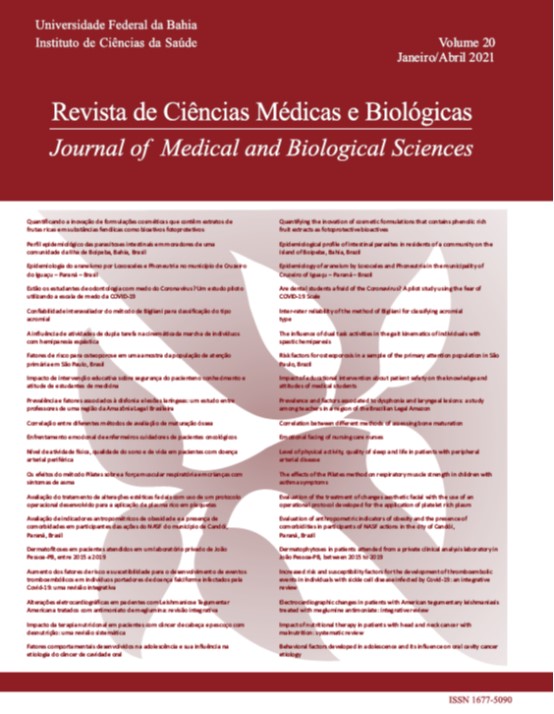Dermatophytoses in patients attended from a private clinical analysis laboratory in João Pessoa-PB, between 2015 to 2019
DOI:
https://doi.org/10.9771/cmbio.v20i1.36050Palavras-chave:
Dermatophytes. Tinea. Filamentous Fungi.Resumo
Introduction: dermatophytoses or “tineas” are characterized by being mycoses caused by fungi of the genera Epidermophyton, Trichophyton and Microsporum. These mycotic infections can present themselves as a form of lesions that affect the skin, hair and ails of individuals of both genders and all ages. Objective: to elucidate the epidemiological profile of dermatophytoses in patients examined by a private clinical analysis laboratory in João Pessoa-PB, between 2015 and 2019. Methodology: this is an epidemiological, analytical, retrospective and documentary study, in which data collection took place at the Clinical Pathology Laboratory – “HEMATO”, located in João Pessoa – PB. Results: the profile of those affected was predominantly female (58.5%), 18 to 59 years old (38.4%), white (53.6%) and with lesions, mainly in skin glabrous (38.5%), feet (33.3%) and nails (12.8%). When relating the age group to the injury site, it was noticed that injuries on glabrous skin, feet and nails, were more frequent in individuals aged 18 to 59 years, while injuries to the scalp were mostly found in individuals younger than 18 years old. The most prevalent species were M. canis (31.9%) and T.rubrum (31.9%). When correlating the fungal species with the lesion site, it was noted that M. canis was the main agent responsible for lesions in glabrous skin, scalp and hands, while T. rubrum was predominantly observed in nails and T. mentagrophytes in feet. Conclusion: it is concluded that the data present in this research can promote the development of indicators and public policies for the population most susceptible to dermatophytosis.
Downloads
Downloads
Publicado
Como Citar
Edição
Seção
Licença
Copyright (c) 2021 Revista de Ciências Médicas e Biológicas

Este trabalho está licenciado sob uma licença Creative Commons Attribution 4.0 International License.
A Revista de Ciências Médicas e Biológicas reserva-se todos os direitos autorais dos trabalhos publicados, inclusive de tradução, permitindo, entretanto, a sua posterior reprodução como transcrição, com a devida citação de fonte. O periódico tem acesso livre e gratuito.






